Corydoras panda – Panda Corydoras
Since its introduction into aquatics in 1971, this Corydoras species has been very popular. It is an attractive fish with interesting behavior. The markings on its head look somewhat similar to those of the Panda and this may partly explain its popularity.
They were first described in 1971 by Nijssen & Isbrücker.
Description
With a length of 5 centimeters, the Corydoras panda is not the largest species, but despite its small size it can hardly be called shy. This fish stands out because of its two black spots, one on its head near its eye, and one at the beginning of its tail. Its color is usually white/beige, which can vary quite a bit, the dorsal fin is black.
If some space is left free at the front of the aquarium, the Corydoras panda will often be found here, scanning the bottom in search of food. In any case, a sandy bottom is recommended in this open space to avoid damaging its barbels. This fish can dive into the sand with its head up to over its eyes, and sharp gravel could cause damage. Make sure that the water surface remains open, because they sometimes start breathing on the surface (intestinal breathing, they swallow the air and then squeeze it through the intestines).
The males and females grow to approximately the same size (5 centimeters), although their appearance is the same, females can still be recognized by their fuller abdomen, which is only visible when the fish are adults.
Biotope
The Corydoras panda originates from the upper reaches of the Amazon in Peru. They inhabit both black and clear water streams. In the spring, the temperature of the water can drop considerably due to the meltwater from the Andes, the temperature can then drop to about 19 degrees Celsius.
Diet
Like all other Corydoras, the Corydoras panda loves red mosquito larvae, artemia, tubifex, enchytraea, but all other frozen species are also happy to be included. Food tablets are also suitable, as long as the food is not too large. This bottom dweller is a real omnivore that scavenges leftovers from the bottom.
The Aquarium
The aquarium does not have to be very large for the Corydoras panda. A minimum length of about 60 centimeters for a school of about 8 is sufficient. Decorate the aquarium with fine (filter) sand on the bottom. Make sure you have some open space on the bottom in the foreground/middle for them to dig around in the sand looking for something edible.
In addition, shelter in the form of plants and driftwood, for example, is important. The Corydoras can hide in this if necessary.
The temperature for the Corydoras panda should not be too high. Keep them at a temperature of around 20 to 25 degrees. A continuously higher temperature than 25 degrees Celsius can significantly reduce the lifespan of these small Corydoras. So don’t keep them too warm! Slightly colder than 20 degrees is possible for a short period of a few weeks. This essentially imitates the season with which you can stimulate spawning.
Breeding Corydoras panda
Use three males and one female to breed the Corydoras panda. Make sure they are well fed with black mosquito larvae. The eggs are fertilized in open water and deposited on glass, leaves, stones or in Java moss. Detach the eggs or transfer them to a breeding tank together with the substrate. The eggs hatch after 2 to 3 days. Make sure that the Corydoras panda eggs are not exposed too brightly, otherwise they will become moldy. You can raise the fry with cyclops or newly hatched brine shrimp nauplii.
Transporting Corydoras
Many Corydoras species have a poisonous defence mechanism to prevent being eaten by larger fish. In case of danger they can spread the spines in their dorsal and pectoral fins and lock them in place. This way the Corydoras gets stuck in the mouth or throat of the predator, a clear signal for other predators to leave them alone. When netting Corydoras you will see them get stuck in your net with their fins. Take care when you are getting them out, if the spine punctures your skin the tip can break off and remain in your skinn. The wounds can be painfull and often can become infected.
In addition to the pointy spines, some Corydoras species can release a toxin into the water when stressed or in danger. When transported in too small a volume of water or too many Corydoras in the small space, this can lead to rapid death among the fish. It is therefore preferable to only transport the Corydoras with other Corydoras and not too much in one bag. Because little research has been done on this venom, it is not clear whether this venom is spread from the gills or from the spines. It is thought that at least the Corydoras adolfoi, Corydoras arcuatus, Corydoras melini, Corydoras metae, Corydoras panda, Corydoras robineae, Corydoras rabauti, Corydoras atropersonatus, Corydoras sterbai and Corydoras trilineatus have this poison, but it is advisable to pay attention to the other species as well.
Video
Authors
Coby – J. de Lange
Copyright images
Hristo Hristov
Dennis Roelsma






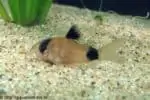
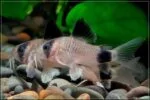
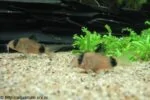


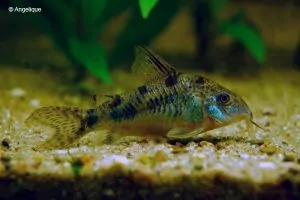
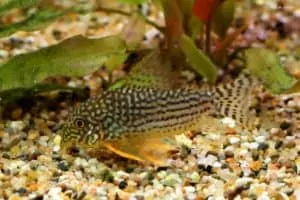


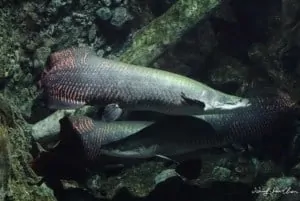


Reviews
There are no reviews yet.